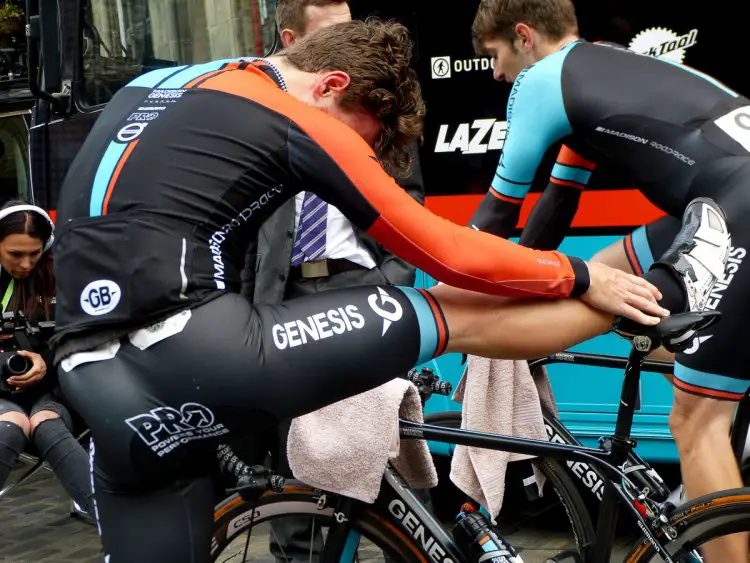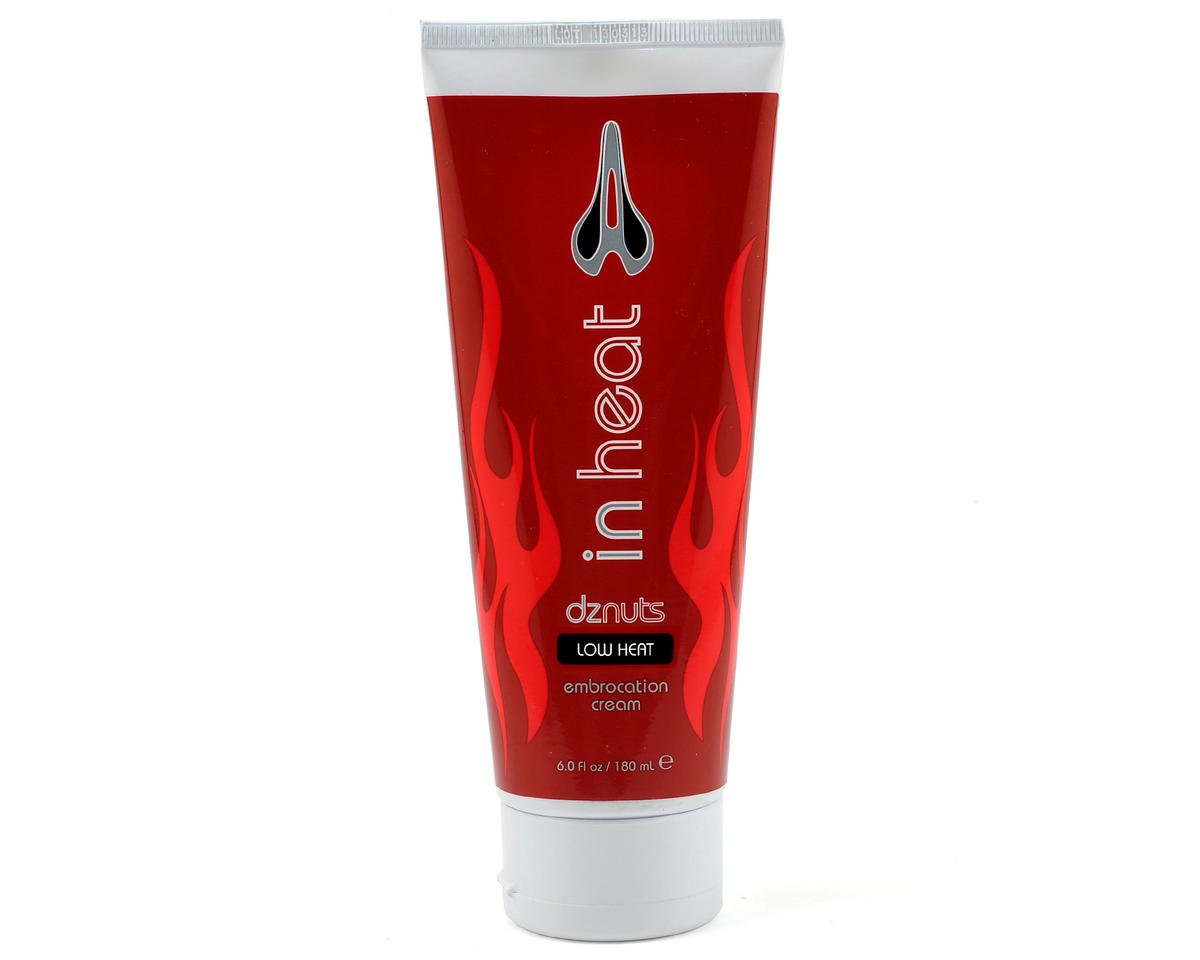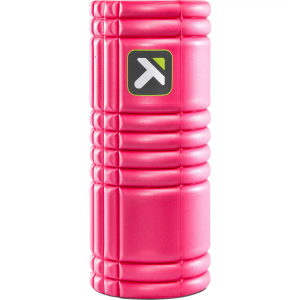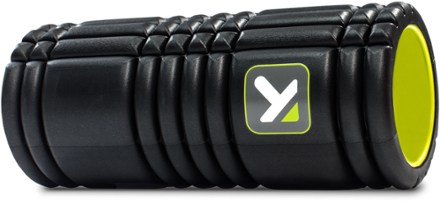Suffer from back pain or leg cramping during training or racing? Are you diligently stretching out before your workout or race? For today’s Cyclocross Magazine’s Training Tuesday piece, we take a look at the age-old pre-workout stretching routine.
by Ian McMahan
Pre-Race Pop Quiz:
Puzzled? They all seem like logical preparation before thrashing your body, and each have their own risks, right? However, new studies in sports medicine have found that option C, stretching, may actually do more harm than good. We’ll explain why the age-old wisdom of high school gym class needs an update.
Types of Stretching
The type of stretching linked to possible decreases in performance is the traditional form, termed “static stretching” in the scientific literature. Static stretching is defined as stretching a muscle to its farthest point and then holding that position for a prolonged period of time, usually 15–60 seconds.
Another frequently used type of stretching is dynamic stretching. This more active type of stretching is one in which momentum and active muscular movements are used to stretch, but the stretch position is not held. Examples of dynamic stretching include leg swings or walking lunges.
It’s also important to draw a distinction between stretching and flexibility. Flexibility refers to the general ability of a muscle or joint to move through a range of movement. Stretching can change overall flexibility in the short- and long-term.
A Research Rundown
It was originally believed that the proposed benefits of static stretching and increased flexibility would lead to a lowered rate of injury and increased performance as the muscle would offer less resistance to moving joints. However, subsequent research has not been able to link higher levels of flexibility with any decreased rate of injury.
The President’s Council for Physical Fitness now recommends that “only normal levels of flexibility are needed for a low risk of injury.” The council further states that there seems to be little basis for the conclusion that pre-exercise stretching lowers the risk of injury in individuals with normal levels of flexibility. Additionally, individuals with above-normal flexibility could even be at greater risk for certain types of injury when they stretch before exercise.
What does this mean for cyclocross and other endurance sports where overuse injuries abound? Researchers believe that the timing of stretching is critical for performance. Stretching before exercise may actually be correlated with lowered performance—specifically, prolonged pre-exercise stretching has been linked to decreases in cycling power and economy, jump height, sprint speed, agility, balance and running economy.
A recent study in the Journal of Sport Sciences examined the effects of several types of stretching on a measure of maximal cycling performance called the Wingate Test. Researchers found that static stretching decreased maximal cycling performance by lowering peak power and increasing the time it took for cyclists to reach full power. Although dynamic stretching mildly increased the time required to reach full power, peak power was unaffected.
In another test, researchers at the Cal State Fullerton Human Performance Laboratory investigated the specific effects of static stretching on cycling economy. The study found that a group of highly trained cyclists who underwent a traditional static stretching program had to expend greater energy to maintain a constant cycling pace. This apparent rise in energy cost has the potential to create a disadvantage for endurance athletes in any sustained endurance event—such as cyclocross. So what’s going on? The authors of the study hypothesize that the stretched muscles are less able to produce force, meaning that the athlete must expend greater energy to keep pace.
A similar study conducted by researchers in Italy found that the time it took to reach fatigue after cycling at a hard pace was reduced by 25 percent in a group that stretched immediately before exercise. The researchers again found that the stretching group expended a greater amount of energy and were less efficient. These results also apply to running; Florida State researchers found that runners who stretched before a 30-minute time trial were not able to run as far as counterparts who did not stretch.
Is All Pre-Race Stretching Bad?
So, research suggests that static stretching diminishes the ability of the stretched muscle to produce force and that this effect can last up to one hour after the stretching session. But for those who just can’t drop stretching from their pre-race routine, options remain. Dynamic stretching does not seem to adversely affect performance in the same manner as static stretching.
Most of the research on dynamic stretching before exercise shows a neutral or mildly positive effect on performance. And because the sport encompasses many explosive movements—such as mounting the bike and jumping over barriers—dynamic stretching makes perfect sense for cyclocross.
Sage Rountree, author of “The Athlete’s Guide to Yoga,” recommends using a dynamic warmup before a workout. She says a pre-exercise routine should encompass “sun salutations, or any kind of flow moving into and out of poses with the breath, which will get the joints lubricated and muscles looser without diminishing power.”
Balance poses are also good at warming up the standing leg for further activity—just don’t bring the raised leg into too deep of a stretch. Rountree warns that for explosive efforts, like those required in cyclocross, it’s better to reserve any long stretching holds for after the race or workout.
What Does it Mean for You?
With cyclocross season rapidly approaching, what should your pre-race routine include? One thing that research affirms is the value of a sport-specific warm-up. For cyclocross, this means a light warm-up of jogging and cycling with brief bursts of higher intensity.
It’s important to remember that everyone is unique. If you have been advised to stretch by your doctor or physical therapist, he or she likely knows your body better than a researcher. For most people, though, traditional, static stretching should be saved for after the race.
If you do want to stretch, use a dynamic stretching program that addresses the muscle groups used in cyclocross.
Checking your tire pressure never hurt, either.
Ian McMahan is head athletic trainer at Active Care Physical Therapy in San Francisco and works with cyclists of all abilities.
’Cross Is Coming, and for some, it’s here. Have your best cyclocross season ever with all of our Training Tuesday pieces here from coaches Mayhew, Adam Myerson and Kenneth Lundgren and others. Can’t get enough? See our Cyclocross Academy and Cyclocross 101 articles here.


































